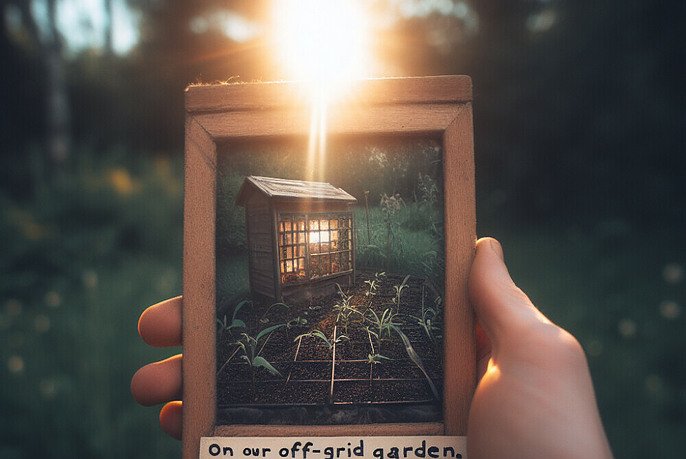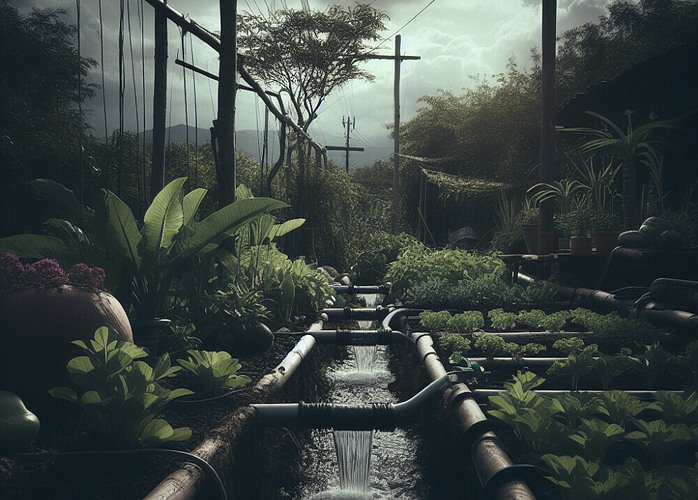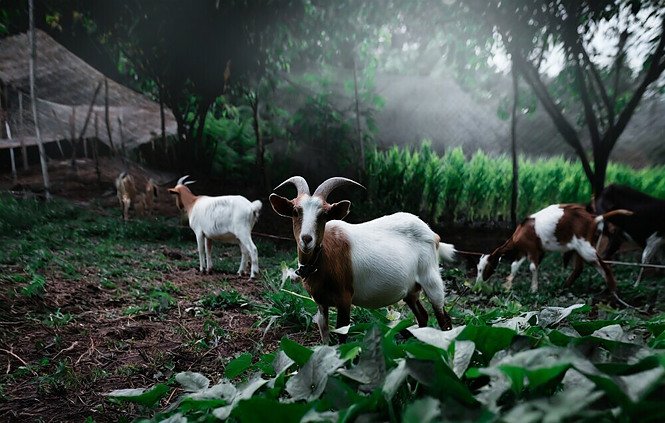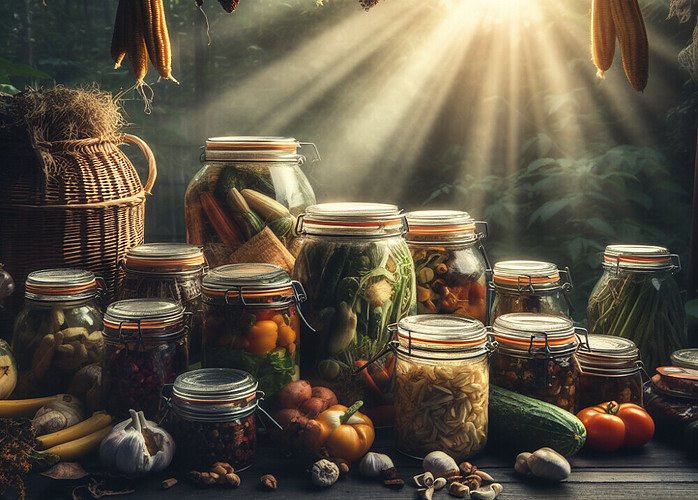Embark on the transformative journey of “Growing Your Own Food For Off-Grid Living.” Rooted in the principles of sustainable agriculture, this exploration digs into the essential foundations of off-grid farming: soil management, weed control, efficient irrigation, animal husbandry and food preservation. Beyond mere practicality, adopting this approach signifies a profound commitment to harmonious coexistence with nature. Join us as we navigate the key steps for establishing an off-grid garden and explore the intricacies of sustainable living.
Cultivating Knowledge and Techniques for Sustainable Off-Grid Living
Deep farming knowledge is vital for sustainable off-grid living, encompassing soil health, weed control, and irrigation for optimal crop growth, and fostering self-reliance. This knowledge forms the foundation for a harmonious coexistence with the environment, promoting well-being and environmental stewardship.
Mastering off-grid farming techniques is essential for adopting natural state living and reducing reliance on external interventions. This approach promotes crop resilience, sustainable ecosystem balance, and responsible resource management, aligning with off-grid living principles. It signifies a commitment to a lifestyle that meets immediate needs while nurturing the environment, combining expertise for a sustainable journey toward natural state living.
How do you use farming knowledge off-grid? Let’s discuss how mastering off-grid farming promotes self-reliance and environmental consciousness.
Setting the Stage: Preparing for Your Off-Grid Garden

Embarking on the journey of establishing an off-grid garden requires meticulous planning and thoughtful consideration. Setting the stage for your garden involves key steps that lay the foundation for a thriving oasis. Let’s dig into the essential aspects of preparing for your off-grid garden.
1: Selecting the Perfect Location
The success of your off-grid garden begins with choosing the ideal location. Assess the sunlight exposure, prevailing wind patterns, and accessibility to water sources. Opt for a spot that receives ample sunlight, is sheltered from harsh winds, and provides convenient access to water, setting the stage for optimal plant growth.
2: Creating a Seasonal Plant and Harvest Schedule
Develop a well-thought-out seasonal plan that aligns with your climate and region. Identify the growing seasons, frost dates, and optimal planting times. By creating a plant and harvest schedule, you maximize the productivity of your off-grid garden, ensuring a continuous supply of fresh produce throughout the year.
The Foundations of Off-Grid Farming
1: Soil Management
This keystone in the intricate practice of off-grid farming necessitates a profound understanding of soil composition and health. Moving beyond the conventional approach of merely assessing nutrient levels, off-grid farmers engage in a holistic strategy, implementing natural techniques that enrich the soil and elevate its fertility levels.
Cover cropping is a pivotal technique in this regard, involving the strategic planting of specific crops during non-harvest periods. These cover crops act as protective shields for the soil, preventing erosion, improving structure, and contributing organic matter upon decomposition. This not only fortifies the soil’s nutrient content but also nurtures a thriving microbial community, enhancing overall soil health.
Composting, another integral facet of off-grid soil management, involves the decomposition of organic matter. This process results in the creation of nutrient-rich humus, which serves as a natural fertilizer. By integrating composting into their practices, off-grid farmers not only enhance soil fertility but also promote a dynamic and diverse ecosystem within the soil, fostering an environment conducive to plant vitality.
The incorporation of organic amendments, sourced from natural materials like animal manure or plant residues, further contributes to the enrichment of the soil. These amendments not only provide essential nutrients but also enhance the physical properties of the soil, promoting aeration and water retention. As a result, the soil becomes a resilient and supportive medium for healthy plant growth.
2: Weed Control

Off-grid farming demands resourceful weed control methods, especially considering the scarcity of traditional herbicides. Manual techniques, such as hand weeding and the use of simple tools, become crucial for weed removal without relying on external inputs, aligning with the ethos of self-sufficiency. Hand weeding, often employing basic tools, becomes a fundamental practice in weed removal, embodying the values of independence and reducing dependence on external inputs.
Cover cropping emerges as a strategic tool in the off-grid farmer’s arsenal for natural weed suppression. By planting specific crops during non-harvest periods, a living mulch is created, providing shade to the soil and outcompeting weeds for essential resources. This not only curtails weed growth but also adds organic matter upon decomposition, contributing to soil health.
Additionally, off-grid farmers employ mulching with both organic and inorganic materials as a preventive measure against weed germination. Organic mulches, such as straw or wood chips, serve a dual purpose by inhibiting weed growth through shading and enhancing soil health through decomposition. Inorganic mulches, like plastic sheets, act as physical barriers, preventing weed germination and establishment while promoting moisture retention in the soil.
Livestock integration represents an eco-friendly and sustainable approach to weed management in off-grid settings. Grazing animals, such as goats or sheep, play a dual role by providing nutrition through weed consumption while simultaneously contributing to natural fertilization through their droppings. This integration aligns with the principles of regenerative agriculture, where farming practices are harmonized with natural processes.
3: Irrigation Systems

Efficient irrigation is a fundamental pillar of successful off-grid farming, serving as the lifeblood that sustains a flourishing garden in remote settings. This section lays the groundwork for cultivating a thriving off-grid garden by emphasizing the importance of water management and introducing innovative irrigation systems tailored to the unique challenges of off-grid living.
In off-grid environments, where water resources are often limited, mastering efficient irrigation techniques is essential. The goal is to optimize water usage, ensuring that every drop contributes to the vitality of the garden. This not only supports healthy plant growth but also aligns with the overarching principles of sustainability and self-sufficiency.
One key aspect of efficient off-grid irrigation is rainwater harvesting. Harnessing the power of nature, off-grid farmers collect and store rainwater during precipitation events. This harvested rainwater becomes a valuable resource during dry periods when conventional water sources may be scarce. By incorporating rainwater harvesting systems, off-grid gardens become resilient to fluctuations in water availability.
Drip irrigation is another indispensable technique in the off-grid farmer’s toolkit. This method delivers water directly to the base of each plant through a network of tubes and emitters. This targeted approach minimizes water wastage and ensures that plants receive the precise amount needed for optimal growth. Drip irrigation systems are particularly well-suited for off-grid settings, where water conservation is paramount.
In addition to these methods, off-grid farmers may explore other innovative irrigation systems, such as sub-surface irrigation or greywater recycling. Sub-surface irrigation delivers water directly to the root zone, minimizing evaporation and maximizing efficiency. Greywater recycling involves reusing water from household activities, like washing dishes or bathing, to irrigate the garden. Both methods contribute to sustainable water management practices in off-grid farming.
The Role of Animal Husbandry in Self-Sufficient Living

In the quest for a self-sufficient off-grid life, integrating animal husbandry becomes essential, enhancing the fabric of sustainable living. Raising livestock not only deepens one’s connection with the land but also promotes a holistic approach to farming. Let’s look into how animal husbandry contributes to a self-sufficient and sustainable lifestyle.
1: Nutrient Cycling and Soil Health
Livestock, such as goats, sheep, or cows, play a pivotal role in nutrient cycling. Their manure serves as a valuable natural fertilizer, enhancing the soil’s fertility and promoting the growth of healthy crops. This symbiotic relationship between animals and the land creates a closed-loop system, reducing the dependence on external inputs.
2: Food Security and Diversity
Raising livestock provides a direct source of food, contributing to increased food security. Animals offer a renewable and sustainable protein source, complementing plant-based produce from the garden. The diversity in the food sources cultivated through animal husbandry strengthens resilience against potential crop failures or shortages.
3: Energy Independence
Animal husbandry extends beyond the immediate benefits of meat and dairy production. Animals can also be integrated into energy production systems, such as using their manure for biogas production. This sustainable energy source further reduces reliance on external energy providers, fostering a greater degree of energy independence in off-grid living.
4: Companion and Working Animals
Beyond their roles in food production, animals can serve as companions and even assist in various tasks around the homestead. Dogs may provide security, while certain breeds of livestock can be employed for tasks like weed control or ploughing. This multi-functional aspect of animal husbandry enhances the overall efficiency of the off-grid lifestyle.
5: Cyclical Resource Utilization
The integration of animal husbandry encourages the cyclical utilization of resources. For instance, crop residues and surplus produce can be used as feed for animals, completing a natural cycle of resource utilization. This interconnectedness minimizes waste and maximizes the efficiency of the entire farming system.
6: Connection with Nature
Caring for animals fosters a profound connection with nature. It requires an understanding of the needs and behaviours of the animals, promoting a sustainable and harmonious relationship with the environment. This connection enhances the overall well-being of individuals living off the grid.
Strategies for Preserving Food and Managing Resources and Expenses

Food preservation techniques play a crucial role in maintaining a consistent and varied food supply, especially for individuals living off the grid or in areas where access to fresh produce may be limited. These methods not only extend the shelf life of perishable items but also contribute to reducing food waste and ensuring a steady source of nutrition.
1: Canning
Canning involves sealing food in airtight containers and heating them to destroy or inactivate microorganisms that cause food spoilage. This method is particularly effective for preserving fruits, vegetables, and meats. The process not only enhances the longevity of the food items but also helps to retain their nutritional value. Canned goods are convenient for storage and can be easily transported, making them an essential component of a well-prepared pantry.
2: Drying
Dehydration, or drying, removes the moisture content from food, inhibiting the growth of bacteria, yeast, and mould. This technique is versatile and can be applied to fruits, vegetables, herbs, and even meats. Dried foods are lightweight, occupy less space, and can be rehydrated when needed. Dehydrators, sunlight, or ovens are common tools for this method. Dried fruits and vegetables are not only space-efficient but also make for nutritious snacks.
3: Fermenting
Fermentation is a natural preservation method that involves the use of microorganisms like bacteria, yeast, and molds to break down sugars and starches in food, creating lactic acid or alcohol. This process not only extends the shelf life of the food but also enhances its flavour and nutritional profile. Common examples of fermented foods include sauerkraut, kimchi, yoghurt, and pickles. Fermenting is an excellent way to add probiotics to the diet, promoting gut health.
4: Pickling
Pickling involves immersing food items in a solution of vinegar, salt, and sometimes sugar, along with various herbs and spices. This acidity inhibits the growth of bacteria, preserving the food. Pickled foods include cucumbers, beets, peppers, and more. The tangy and flavorful result adds variety to meals and serves as an excellent accompaniment to a wide range of dishes.
Conclusion
Embracing the concept of ‘Growing Your Own Food for Off-Grid Living’ goes beyond a mere lifestyle change; it marks the beginning of a transformative journey towards self-sufficiency and sustainability. It’s not solely about practicality; rather, it symbolizes a commitment to a lifestyle that respects and seamlessly integrates with the natural environment, fostering a deeper connection with the land for a more sustainable, self-sufficient life.






